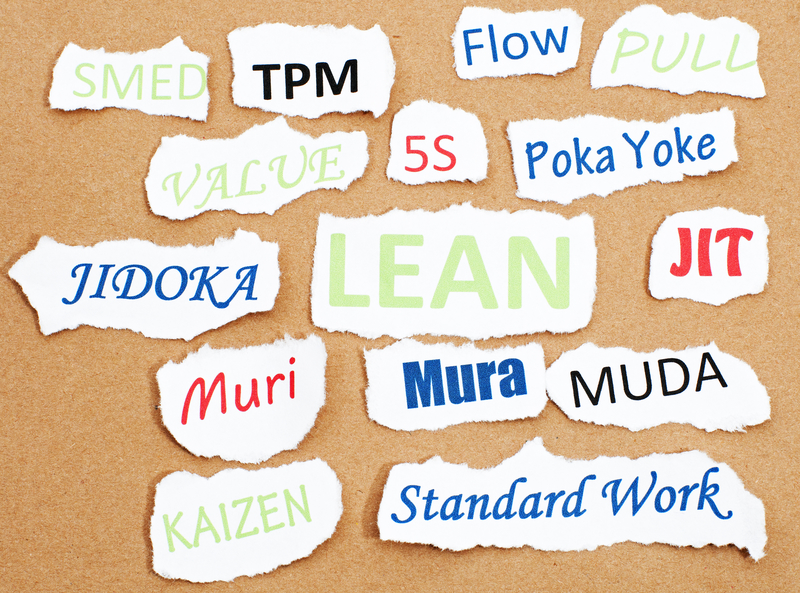 Thinking One Step Ahead with SMED
Thinking One Step Ahead with SMED
Proper optimization is not just about making the facility run well with the current parameters in mind, but also to allow it to run as efficiently as possible in the future, considering upcoming developments. You have to always be one step ahead of the current environment and make informed strategical decisions.
SMED stands for Single-Minute Exchange of Die, and it refers to a methodology for improving the processing rate of a manufacturing plant. It achieves that by streamlining the process of switching from one product to the next one in line, and ensuring that all of your machines keep running at optimal efficiency at all times. It can also be used in an office setting, such as switching from task to task.
From a lean perspective, we want to complete tasks one at a time. When we batch our work, it’s often a result of the time required to changeover from product to product, or task to task. SMED can help us reduce the changeover time, to make it more efficient to operate in smaller batches.
SMED is also referred to as changeover reduction.
Going in depth
There are many intricate details to SMED. It’s a more general term referring to the process of changing targets within your work. The name of the methodology also comes from the fact that Toyota, in the past, identified larger dies as the most problematic objects in their manufacturing chain. Dies in an office setting could be a software program that takes time to load.
Changeover times are often responsible for the biggest slowdowns in productivity, and that streamlining the process of switching work could have dramatic effects on the overall output of the business.
It’s also important to note that single-minute refers to the idea that those “exchanges” should occur in a single-digit minute (0-9 minutes), not necessarily in sixty seconds. Anything up to about ten minutes is okay in the eyes of SMED, although of course the specific time is going to vary from one company to another.
SMED and continuous improvement
SMED goes hand in hand with continuous improvement, as it can allow you to always seek to maximize the potential capacity of the organization. It’s a technique that can be applied regardless of the specific current situation, making it highly flexible and suitable for incremental upgrades. What’s more, SMED can ensure that an organization running with more advanced modern technology is always utilizing that technology to its full potential, looking for opportunities to improve its output.
What exactly should you do to implement SMED though? There are several main components to the methodology, and the exact way of using it is going to vary across the board. The general idea is to ensure that there is a clear separation of internal and external setup, so that the state of the machines or computer systems can be reset as quickly as possible.
- Internal Setup – Time spent in changeover when the machine or system is idle
- External Setup – Time spent in changeover when the machine is working on something else
For example, when you look at the time to changeover your work, how much could be done while you’re finishing up the last job or project? Could someone else be getting the next item ready to go? Getting these tasks started earlier is an example of moving from internal to external setup.
In addition, the creator of SMED states that it’s important to focus on standardizing the functionality of the company’s machines and systems, not the specific output they’re producing. In a manufacturing setting, clamps should be functional, or alternatively fasteners should be removed completely if that’s not possible. This reduces the actual time to complete the task.
Introducing some additional intermediate steps in the process can also have a positive effect on the overall performance. Sometimes the lack of buffer zones can be a major contributing factor to performance issues, and 5S is a great method to ensure that those problems don’t go unnoticed.
Last but not least, there is also a strong suggestion that the company should look into automating as much as possible from its current range of tasks. This is an obvious one in many industries, especially auto manufacturing where SMED is rooted. Priority should be placed on the internal setup tasks that slow down the overall changeover time.
Conclusion
SMED can be a great way to always have a good edge in your company. It’s a flexible technique that can be highly useful to a variety of different organizations, and it’s also aligned with the current trends in technology and the direction we’re moving towards for the future. There are some clearly valuable lessons to be learned from SMED, and every leader should make it a point to familiarize themselves with the principles behind it as early as they can in their career.








No responses / comments so far.